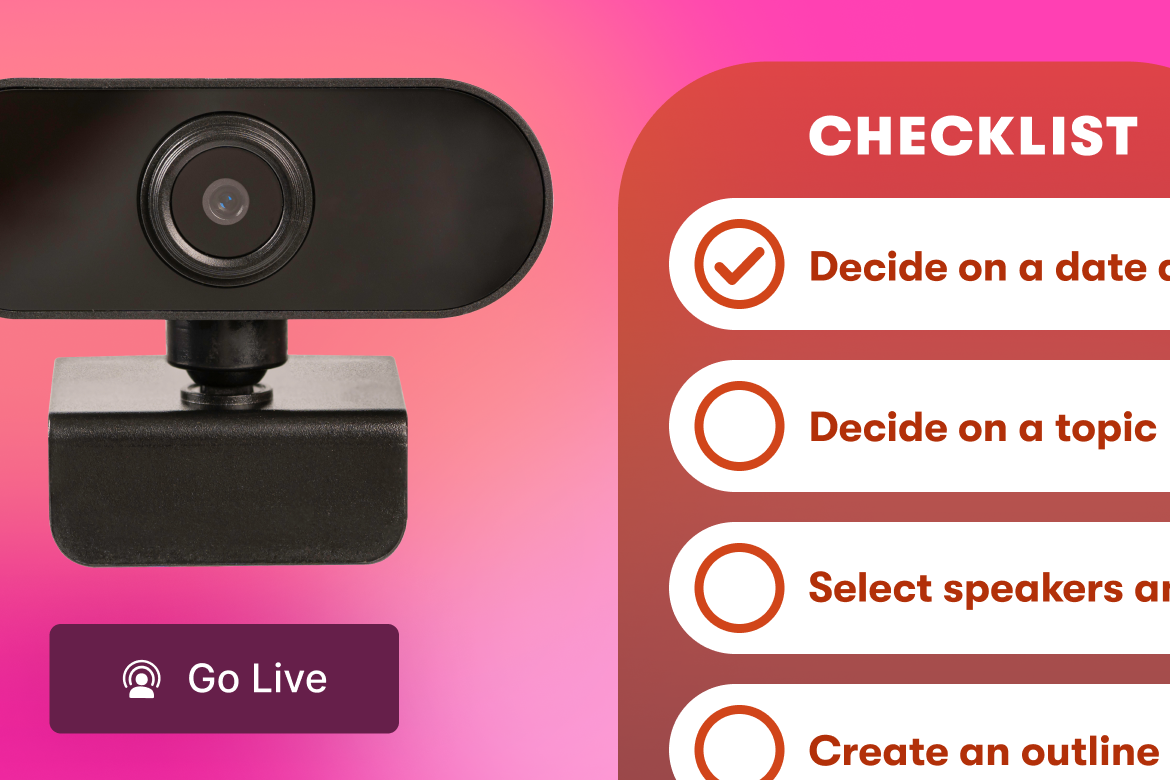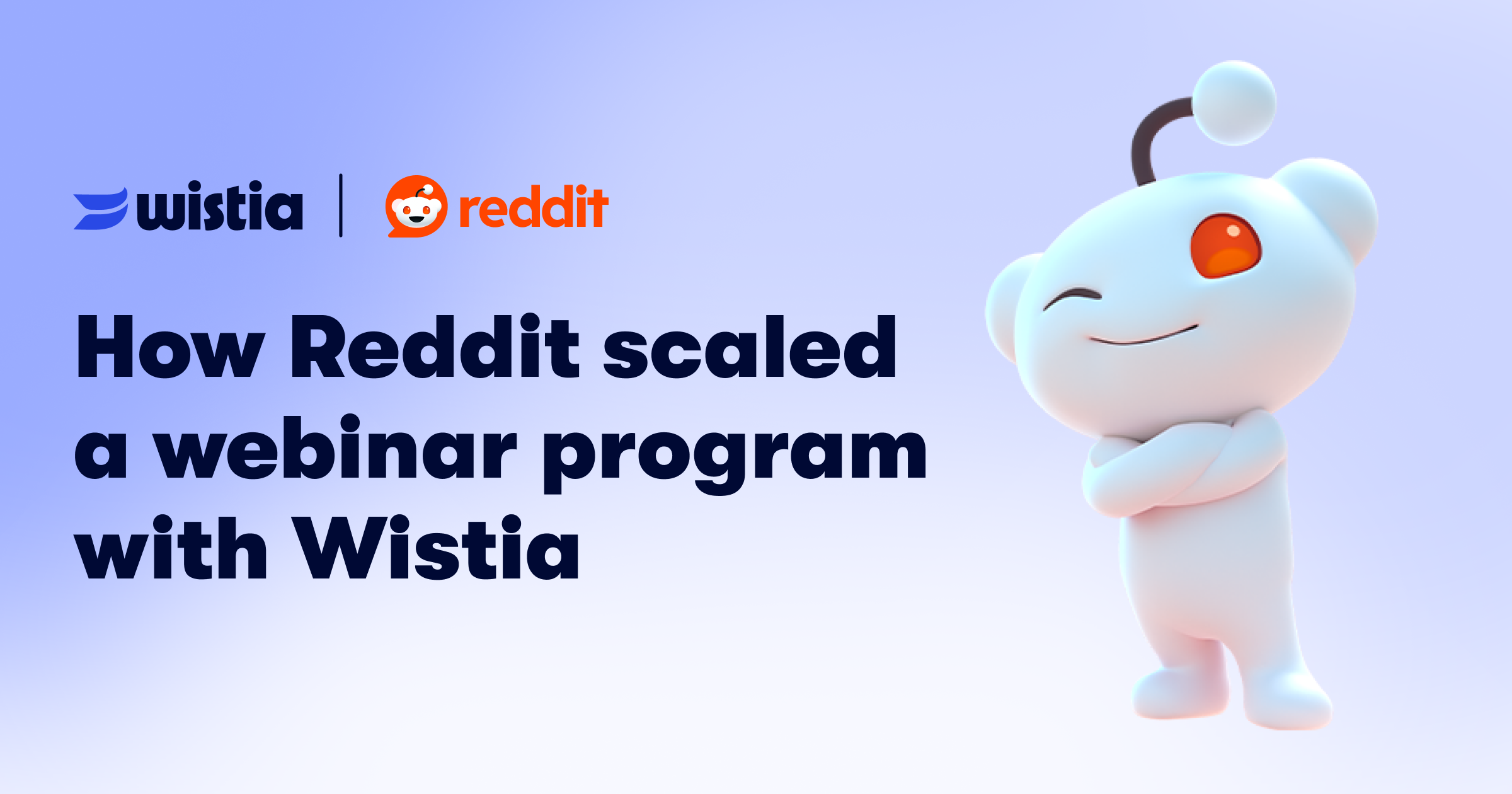You’re the Expert: 5 Types of B2B Video You Should Use to Build Brand Authority
Brand authority isn’t something you can just assign to yourself — it’s something you have to build.
March 3, 2022
Topic tags
You’re likely in your line of business because you know how to do what you do, and you know how to do it well. And, while you have no doubt about your company’s capabilities, the goal of marketing is to share that expertise with others and ultimately persuade people that you can help solve their problems.
In the marketing world, we call this sort of external credibility brand authority. Having brand authority means that your audience feels confident buying from your brand. People trust you and believe what you say. And video marketing can help you establish brand authority by gaining the attention — and then the trust — of your target market.
Video marketing is an umbrella term that encompasses a lot of functions. You can do a lot with video, from education to entertainment. Today, we’re talking specifically about five types of B2B video that will help you build brand authority in your industry.
1. How-to videos
Also referred to as instructional or explainer videos, how-to videos are incredibly effective because they walk your audience through something they want to know about in an easy-to-digest format. It’s like you’re right there with them, guiding them through every step.
How-to videos are also especially popular with search engines. People are constantly searching the internet for quick instructions they can apply immediately. According to TechSmith, online search is the most common way for users to find instructional videos.
“Search is the most common way for users to find instructional videos.”
Think about common questions you get. These could be a great starting point from which to develop your how-to videos, as people in your target audience are probably searching for those answers online.
2. Educational videos
Educational videos help forge a relationship between you and your target market and build trust. These videos show that you provide value beyond your product or service offering. If viewers like your educational content and find it helpful, they’ll likely seek you out for more information and perhaps purchase your product.
Use video as an opportunity to educate your audience on a complex, intimidating, or technical subject. Make things easier for them to understand. By teaching people something they don’t quite grasp, you position yourself as a resource that can help them navigate industry-related concepts and situations.
“Everyone wants to feel like they’re more than just a potential sale and that companies care about more than their bottom lines.”
Everyone wants to feel like they’re more than just a potential sale and that companies care about more than their bottom lines. When you take the time to build a relationship in this way with your customers, it shows them that “you’re showing up to offer value, and that you’re willing to help them beyond selling to them,” according to Forbes.
Try producing a video that explains a complex process related to your industry. Or start by defining a commonly misused or misunderstood term. Break things down in an accessible way, and invite people to ask more questions (you can use this for future content!). This type of video is especially helpful to your audience if you are in an industry like technology, where there’s a lot of jargon and things change quickly.
3. Documentaries or docuseries
Documentaries or docuseries offer you a chance to get a little bit more creative and lean into the goal of entertaining your viewers. However, while we want this to be fun, you still want to provide insight or value on something related to your industry or brand!
Think about the best documentaries you’ve seen and what you took away from them. Usually, you walk away with some new or intriguing thoughts or insights. That’s the goal for companies that create documentaries, too — you want to leave the viewer with some ideas or inspirations — the only difference is that you want those new ideas to be somehow connected to your brand.
There are a lot of different approaches you can take when creating documentaries or docuseries. Try using an angle that builds a connection between you and your audience; a lot of times that means adding a human touch and focusing on people’s stories.
For example, you could show internal behind-the-scenes footage, like a “day in the life” of an employee — the way 360Learning did with Onboarding Joei. Or you could weave together a narrative arc that tells the story of your brand. Or you could highlight the development of a specific product, from what spurred the idea behind it to the product actually landing in the lives of happy customers.
4. Testimonials
Video testimonials and case studies are essentially proof that your product or service makes people happy. You’re telling your audience that people who do business with you are satisfied — and that if they choose your product or service, they’ll be a success story, too.
Take control over the narrative in your testimonials by asking the right questions. Think about what information might be highly persuasive to a new customer and figure out ways to obtain that from your customer base. Post-purchase surveys are one way, as is having a salesperson follow up to get insight.
You also want to use the best success stories. The goal here is to establish credibility and excite your audience, so if you have customers who are really well-positioned or highly regarded in their industry, feature their testimonials far and wide!
Try producing testimonials that show the flexibility of your product or service, too. For example, if you’re a brand management software company, consider highlighting a client that went through a rebrand in one testimonial and another customer who used your software to grow their existing brand image in another video. This widens the scope of your potential audience.
5. Webinars
So far, every video type we’ve discussed has been something you’ll create and then distribute. Webinars, on the other hand, are live events — which may either thrill or scare you (or both!).
Webinars are a great way to talk directly to your audience and show them what you know. Create a webinar or a webinar series featuring panels of experts discussing industry-related topics. If you host live webinars, be sure to save the recordings to your website or video library so that viewers can easily access them even after the webinar event is over.
Unlike the other video types, with a live webinar, you can actively interact with your audience through polls and Q&A sessions. Engaging with your audience is a great way to connect with them and better understand their needs. For example, during the webinar, you can ask your audience topical questions via a poll. Or you can leave time at the end of the session for your audience to ask panelists questions and receive answers on the spot.
Make the most of your video marketing investment by creating an accessible library
If you spend a lot of time and budget on your videos, you want them to be seen by a wide audience. You also probably want to provide a good user experience for anyone who tunes in.
Use Wistia Channels to turn your how-to and educational videos, docuseries, testimonials, webinars, and more into a lead-generating experience. You have the option to gate your channels so that your audience has to provide an email address to access them, thus growing your email list. You can also make it entirely optional to provide an email address by adding a “Subscribe” button at the end of your videos.






